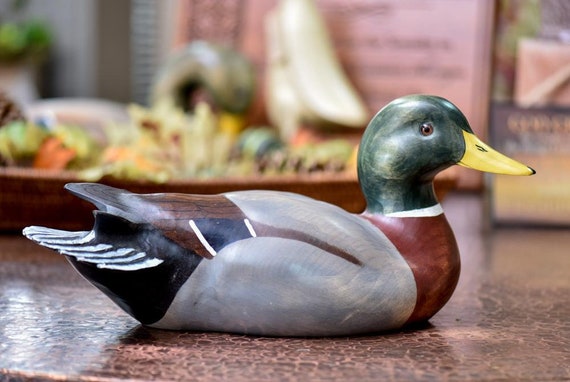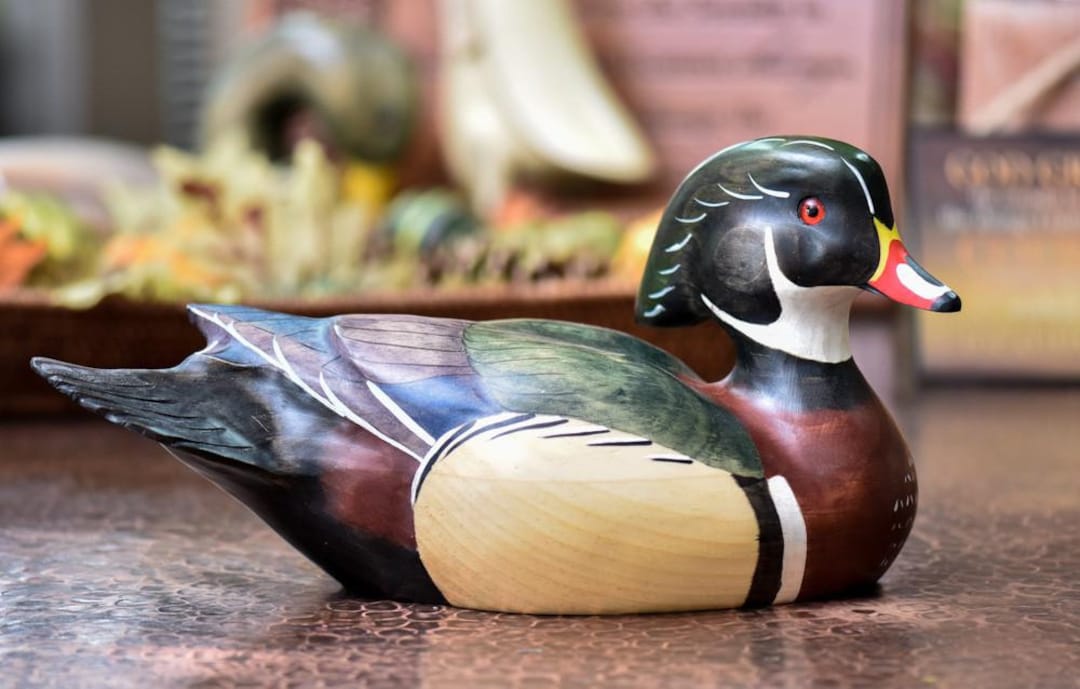Welcome to the fascinating world of decorative wooden duck decoys! These captivating pieces are not only beautiful but also steeped in history and craftsmanship. As a lifelong collector and enthusiast, I’m excited to share my knowledge and personal insights into these charming artifacts.
What Are Decorative Wooden Duck Decoys?
Decorative wooden duck decoys are ornamental representations of ducks, traditionally used for hunting. However, many modern decoys are crafted for display rather than functionality. These pieces can be found in homes, galleries, and collectors’ showcases, showcasing intricate designs and craftsmanship.
The History of Duck Decoys
Dating back to ancient times, duck decoys were initially made by hunters to attract waterfowl. Over time, these functional items evolved into decorative art forms. The tradition of carving started in America during the 19th century, particularly in regions where waterfowl hunting was prevalent.
The Evolution of Craftsmanship
Wooden duck decoys have transitioned from practical hunting tools into cherished collectibles. Craftsmen began to focus on artistic expression, leading to unique designs and elaborate paint jobs that highlight the exquisite beauty of these birds.
Types of Decorative Wooden Duck Decoys
Understanding the types of decorative wooden duck decoys can enhance your appreciation and help you choose the right one for your collection.
1. Classic Decoys
These are replicas of real ducks and are often highly detailed. Classic decoys are usually made from hardwood and painted with care.

Pros and Cons
| Pros | Cons |
|---|---|
| Highly detailed | Can be expensive |
| Great for collectors | May require special care |
2. Contemporary Decoys
Modern interpretations of duck decoys often incorporate various materials and innovative designs.

Pros and Cons
| Pros | Cons |
|---|---|
| Unique styles | Less traditional appeal |
| Can be more affordable | Variety in quality |
3. Antique Decoys
These decoys are prized for their age and historical significance. They often tell a story and represent a particular era in craftsmanship.

Pros and Cons
| Pros | Cons |
|---|---|
| High collectors’ value | Higher price point |
| Unique history | Often require restoration |
Choosing the Right Duck Decoy for Your Collection
When selecting a decorative wooden duck decoy, consider the following factors:

1. Purpose
Are you collecting for display, or do you plan to use it as a functional hunting decoy? Understanding your purpose will guide your choice.
2. Material
Different woods offer various aesthetics. Common materials include cedar, pine, and mahogany, each providing a unique look and feel.

3. Craftsmanship
Look closely at the details. High-quality decoys display smooth carvings, even paint applications, and attention to anatomical accuracy.
4. Budget
Set a budget before you start shopping. Prices can range from affordable to thousands of dollars, depending on the craft, age, and rarity.

Caring for Your Decorative Duck Decoys
Once you have selected your decoys, proper care is essential to maintain their beauty and longevity.
1. Cleaning
Dust your decoys regularly with a soft cloth. For deeper cleaning, use a damp cloth and avoid soaking. Never use harsh chemicals that can damage the wood or paint.
2. Displaying
Keep your decoys in a stable environment. Avoid direct sunlight, which can fade colors, and maintain a consistent temperature and humidity level to prevent warping.
3. Restoration
If your decoy needs repair, consult a professional restorer who specializes in antique wooden decoys, as improper restoration can decrease their value.
Where to Buy Decorative Wooden Duck Decoys
Finding decorative duck decoys can be a thrilling part of your collecting journey. Here are some places to look:
1. Specialty Art Stores
Visit local art galleries or specialty shops that feature handcrafted items. These stores often have a curated selection of quality decoys.
2. Online Marketplaces
Platforms like Etsy and eBay provide vast options, from vintage to contemporary pieces. Be sure to read seller reviews for quality assurance.
3. Auctions and Estate Sales
Keep an eye on local auctions and estate sales for unique finds. These events can be treasure troves of antique and rare decoys.
4. Craft Shows and Exhibitions
Attend craft fairs and exhibitions to meet artisans directly. This way, you can learn about their techniques and the stories behind their decoys.
Comparing Popular Duck Decoy Brands
Brand Overview
Here’s a quick comparison of some popular brands known for their decorative wooden duck decoys:
| Brand | Type | Price Range | Special Features |
|---|---|---|---|
| Herters | Antique | $$$ | High detail and historical significance |
| Wooden Duck Co. | Contemporary | $$ | Unique designs and customization options |
| Old School Decoys | Classic | $$$-$$$$ | Hand-carved and painted by artisans |
| Wild Wings | Contemporary | $-$$$ | Variety of styles and finishes |
Personal Reflections on Duck Decoy Collecting
As someone who has spent years collecting duck decoys, I can say that each piece tells a story. The joy of discovering a rare antique or a beautifully crafted contemporary piece adds unparalleled excitement to the hunting experience. The community of collectors is warm and welcoming, often sharing tips and stories that deepen your appreciation for these art forms.
FAQs about Decorative Wooden Duck Decoys
1. How do I identify a genuine antique duck decoy?
Look for signs of age, such as wear patterns, older materials, and construction techniques typical of certain periods. Consulting an expert is also recommended.
2. Can I use decorative decoys for hunting?
While some decorative decoys are functional, many are not built for the wear and tear of hunting. Always check the manufacturer’s description before using them for that purpose.
3. What is the price range for decorative wooden duck decoys?
Prices vary widely based on age, craftsmanship, and brand. You can find decoys priced anywhere from $20 to over $10,000.
4. How can I enhance my collection?
Attend trade shows, connect with other collectors, and keep an eye on new releases from popular brands to continually grow your collection.
5. Are there any specific care products for wooden decoys?
Yes, use gentle wood cleaners and protective finishes recommended for fine wood furniture. Always test a small area first to ensure compatibility.